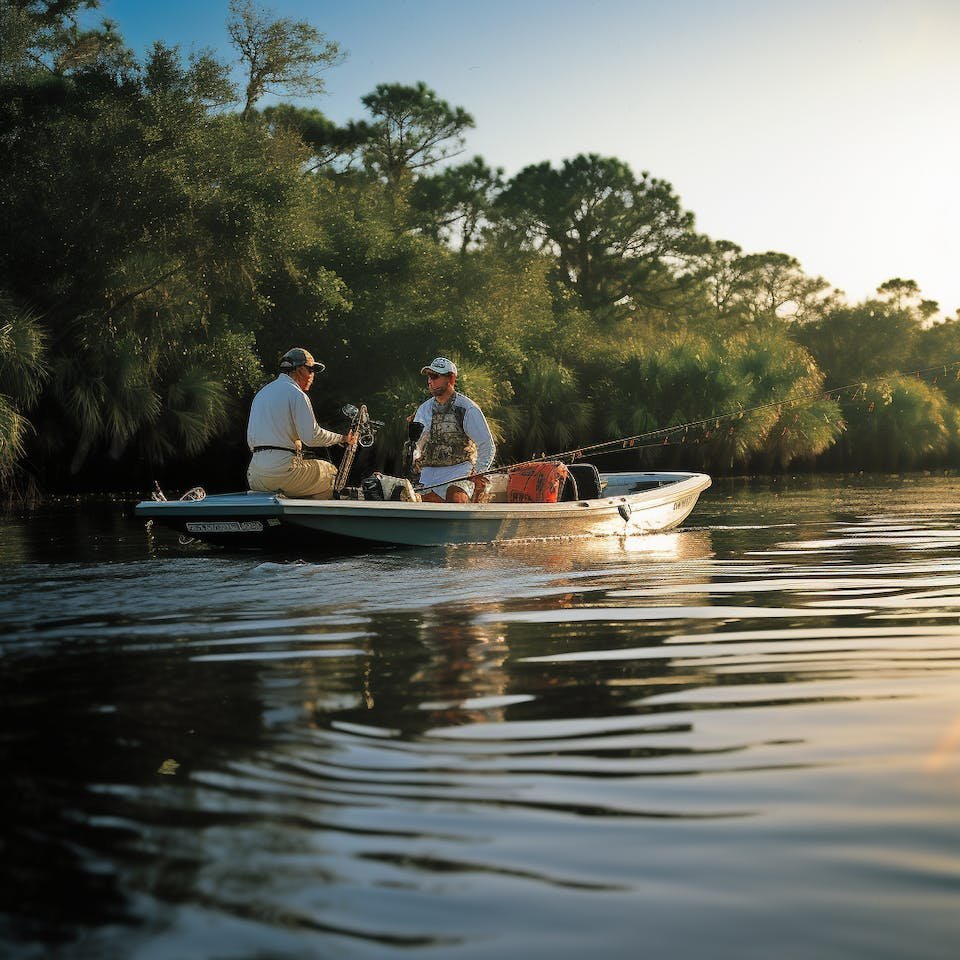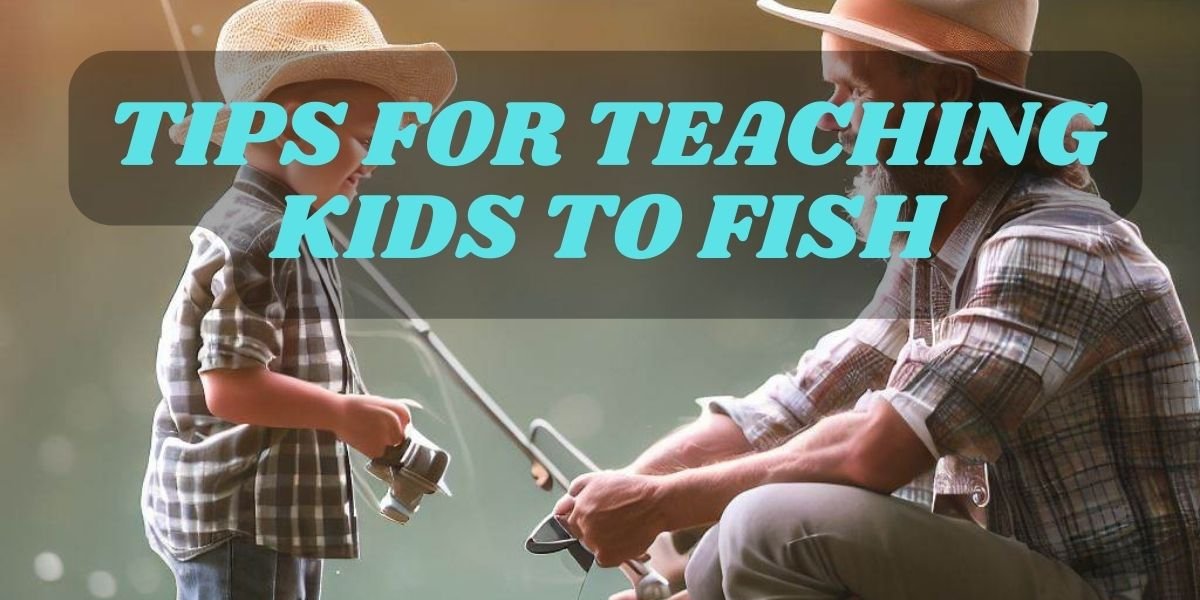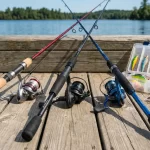I’ve spent countless hours on the water, and I can confidently say that jig fishing is an art form that requires finesse, patience, and practice.
While there are many techniques to master, I’ve narrowed it down to the top 4 jig-fishing techniques that will take your game to the next level.
From dragging the bottom to stroking, these techniques will help you land more fish and elevate your overall fishing experience.
So, if you’re ready to unleash your inner angler and take your jig-fishing skills to new heights, let’s dive in and explore the top 4 jig-fishing techniques you need to learn.
Want to learn more about jig tactics for bass? Check out this in-depth guide.
Key Takeaways:
- Jig Fishing Versatility: Jig fishing can be used to target a wide variety of fish species in both freshwater and saltwater.
- Technique Nuances: The key to success lies in understanding the nuances of each jig fishing technique and how they relate to the targeted fish species and water conditions.
- Dragging the Bottom: This technique involves slowly dragging the jig along the lake or riverbed, allowing the jig to contact the bottom and attract fish that are foraging for food.
- Stroking Technique: This technique involves using a series of short, sharp movements to create a rhythmic action that mimics the movement of injured or distressed baitfish.
- Adaptability: Anglers must adapt their jig fishing techniques to different situations, including fish behavior and water conditions, to increase their chances of success.
- Practice and Patience: Jig fishing requires patience, practice, and a deep understanding of fish behavior and water conditions to master the various techniques.
- Fulfilling Fishing Experience: By mastering jig fishing techniques, anglers can enjoy a rewarding and fulfilling fishing experience, connecting with nature and experiencing the thrill of catching fish.
Dragging along the bottom

The technique of dragging along the bottom is a staple of jig fishing, and for good reason. It’s an incredibly effective way to target bottom-dwellers like catfish, bass, and walleye.
Effective for bottom-dwellers
Effective for targeting fish that spend most of their time near the bottom, dragging along the bottom allows your jig to come into contact with the lake or riverbed, enticing fish that are foraging for food.
This technique is particularly useful in areas with structural features like rocks, weed beds, or drop-offs, where fish tend to congregate.
By slowly dragging your jig along the bottom, you’re able to cover a lot of ground and increase your chances of hooking into a fish.
One of the keys to success with this technique is to use the right type of jig. A heavy jig with a large hook and a durable body is ideal for dragging along the bottom, as it can withstand constant contact with the substrate.
I’ve found that jigs with a curly tail or a swim bait trailer are particularly effective, as they provide a lot of action and movement even at slow speeds.
Another important consideration is the speed at which you drag your jig. A slow, steady retrieve is important, as it allows your jig to naturally sink and bounce along the bottom.
If you’re moving too quickly, you’ll likely scare off any fish that are in the area. Instead, focus on making slow, deliberate movements, and be prepared to wait for a bite.
Slow drag for success
Little do many anglers know, but the speed at which you drag your jig can make all the difference. A slow drag is often the key to success, as it allows your jig to move naturally along the bottom and entice fish into biting.
I’ve found that a slow drag is particularly effective in areas with heavy cover, like weed beds or sunken logs, where fish are more likely to be hiding.
When using a slow drag, it’s important to pay attention to your line and be prepared to set the hook at a moment’s notice.
Fish can be finicky, and they may only give you a slight tap or nibble before deciding to commit to the bite. By being vigilant and setting the hook quickly, you can increase your chances of landing a fish.
One of the most important things to remember when using a slow drag is to be patient. It can take time for fish to find your jig and decide to bite, so don’t get discouraged if you’re not getting any action right away. Keep your jig moving slowly and steadily, and eventually, you’ll start to get bites.
Success with a slow drag comes down to persistence and patience. By keeping your jig moving slowly and steadily, you can entice even the most finicky fish into biting.
Remember to pay attention to your line and be prepared to set the hook at a moment’s notice, and you’ll be well on your way to landing a trophy fish.
Stroking

It’s a technique that requires finesse, patience, and a deep understanding of fish behavior. Stroking involves using a series of short, sharp movements to create a rhythmic action that mimics the movement of injured or distressed baitfish.
Football Jig Specialist
If you’re a football jig specialist, you know that stroking is an important technique to master. Football jigs are designed to imitate the movement of baitfish, and stroking allows you to create a natural, enticing action that triggers strikes from nearby fish.
When using a football jig, I like to use a slow, deliberate stroking motion, allowing the jig to sink and then quickly lifting it off the bottom. This creates a tantalizing action that bass and other species can’t resist.
One of the key things to remember when stroking with a football jig is to maintain a consistent rhythm. You want to create a natural, pulsing action that mimics the movement of a baitfish.
This requires a great deal of finesse and control, as you need to be able to adjust the speed and intensity of your strokes to match the mood of the fish.
In addition to maintaining a consistent rhythm, it’s also important to pay attention to the depth and speed of your strokes.
You want to make sure that your jig is getting down to the desired depth and staying there long enough to attract the attention of nearby fish.
This can be a delicate balance, as you need to be able to adjust your strokes to match the changing conditions of the water.
Stroke and Repeat Motion
Even the most experienced anglers can benefit from practicing their stroking technique. One of the best ways to do this is to use a stroke and repeat motion, where you make a series of short, sharp strokes and then pause to allow the jig to sink. This creates a natural, enticing action that triggers strikes from nearby fish.
When using a stroke and repeat motion, I like to start with a slow, deliberate stroke, allowing the jig to sink and then quickly lifting it off the bottom.
I’ll then pause for a few seconds to allow the jig to settle, before repeating the process. This creates a tantalizing action that bass and other species can’t resist.
This technique is particularly effective in areas with heavy cover, such as weed beds or rocky structures.
By using a stroke and repeat motion, you can create a natural, enticing action that attracts fish from a distance and triggers strikes from nearby fish.
This stroking technique is also effective when targeting active fish that are feeding aggressively. By creating a rapid, pulsing action, you can trigger strikes from fish that are looking for an easy meal.
Just be sure to adjust your strokes to match the mood of the fish, as you don’t want to scare them off with too much action.
Swimming

Unlike other jig fishing techniques, swimming involves retrieving the jig at a faster pace, often just below the surface or at mid-water depths.
This technique is particularly effective for targeting species such as pike, muskie, and bass that are actively chasing baitfish.
Quick twitching action
With a quick twitching action, you can create a sense of urgency and provoke an aggressive response from nearby fish. To achieve this, use a rod with a fast action and a reel with a high gear ratio to rapidly retrieve the jig.
As you retrieve, use your wrist to impart a quick, sharp twitching motion to the jig, creating a darting, erratic action that mimics the movement of a fleeing baitfish.
This technique is especially effective when used in conjunction with a curly tail or swim bait trailer, which adds to the jig’s overall action and appeal.
Be sure to vary the speed and intensity of your twitching motion to keep the jig looking natural and enticing to potential predators.
When using a quick twitching action, it’s crucial to be prepared for a strong strike at any moment. Fish can be quite aggressive when chasing a rapidly moving jig, so be sure to set the hook quickly and firmly to ensure a solid connection.
Close to surface coverage
Surface-breaking fish are always exciting to target, and swimming a jig just below the surface can be a highly effective way to catch them.
To do this, use a jig with a weighted head and a trailer that creates a commotion on the surface, such as a spinner bait or a swim bait with a paddle tail.
As you retrieve the jig, use a steady, consistent motion to keep it moving just below the surface. This will create a subtle disturbance on the water’s surface, making it more likely to attract the attention of nearby fish.
Be sure to vary the speed and depth of your retrieve to cover different areas and depths, increasing your chances of encountering active fish.
When swimming a jig close to the surface, it’s crucial to be aware of your surroundings and the water conditions. Fish can be quite finicky when feeding on the surface, so be prepared to adjust your retrieve and presentation accordingly.
Close-to-surface coverage is an excellent technique for targeting species such as pike, muskie, and bass, particularly during the warmer months when they tend to congregate in shallower waters.
By using a jig to create a commotion on the surface, you can entice these fish into striking, even when they’re not actively feeding.
Jigging on the Fall

All jig-fishing enthusiasts know that jigging in the fall is a highly effective technique for catching a variety of fish species.
This technique involves allowing the jig to fall to the bottom of the water column, and then slowly lifting it back up to repeat the process.
By mastering this technique, you can entice fish into biting, even in areas with heavy cover or structure.
For those interested in learning more about bass fishing techniques, I recommend checking out Top 7 Bass Fishing Techniques You Need to Know About.
This resource provides valuable insights and tips for catching bass and can help you improve your overall fishing skills.
Flipping and Pitching Expert
For expert anglers, flipping and pitching are necessary skills that can be used in conjunction with jigging in the fall.
By flipping the jig into tight spaces or pitching it into areas with heavy cover, you can target fish that are hiding or feeding in these areas.
To master this technique, practice flipping and pitching into different types of cover, such as vegetation, rocks, or sunken logs.
When flipping and pitching, it’s necessary to use the right tackle and presentation. Choose a jig that matches the size and color of the baitfish in the area, and use a rod and reel combo that provides the necessary power and sensitivity.
Pay attention to your line and leader, as these can make a big difference in your presentation and hookset.
Bear in mind, that practice makes perfect, so don’t be discouraged if you don’t see immediate results. Keep experimenting with different techniques and presentations until you find what works best for you and your target species.
Jig it Up and Down
For a more aggressive approach, try jigging the lure up and down while it’s falling. This creates a more erratic action that can trigger strikes from active fish. To do this, simply lift the rod tip up and down while the jig is falling, using a slow and deliberate motion.
When jigging up and down, it’s necessary to pay attention to your line and leader, as these can get tangled or caught on underwater structures.
Use a high-quality line and leader that can withstand the stress of jigging, and be prepared to adjust your presentation as needed.
Expert anglers know that jigging up and down can be a highly effective way to catch fish, especially in areas with heavy cover or structure. By mastering this technique, you can increase your chances of success and land more fish.
Expert tip: When jigging up and down, try varying the speed and intensity of your motion to see what works best for your target species.
Some fish may respond better to a slow, gentle action, while others may require a faster, more aggressive presentation.
Conclusion
From above, we’ve explored the top 4 jig fishing techniques that every angler needs to learn. These techniques – dragging the bottom, stroking, swimming, ripping, and deadsticking – are vital tools in any angler’s arsenal, and mastering them can make all the difference between a successful fishing trip and a disappointing one.
As I reflect on my own experiences with jig fishing, I’m reminded of the countless hours I’ve spent on the water, experimenting with different techniques and fine-tuning my skills.
I can confidently say that jig fishing has been instrumental in helping me develop a deeper understanding of fish behavior and water conditions.
Through jig fishing, I’ve learned to appreciate the subtleties of the underwater world and to adapt my techniques to the ever-changing conditions.
I’ve also come to realize that jig fishing is not just about catching fish; it’s about the journey, the thrill of the hunt, and the sense of accomplishment that comes with landing a hard-fought catch.
Whether you’re targeting trophy fish or simply enjoying a relaxing day on the water, jig fishing offers a unique and rewarding experience that’s hard to find elsewhere.
So, as you commence on your jig fishing journey, remember that practice and patience are key. Don’t be discouraged by initial setbacks or failures – every experienced angler has been there at some point.
Instead, focus on honing your skills, experimenting with different techniques, and staying attuned to the nuances of the water and the fish.
With time and dedication, you’ll develop the expertise and confidence to tackle even the most challenging fishing situations. And who knows? You might just find yourself hooked on jig fishing for life.
FAQ
Q: What is jig fishing and how does it work?
A: Jig fishing is a versatile and effective technique that involves using a weighted lure, called a jig, to mimic the movement of baitfish and entice fish into biting.
The jig is attached to a fishing line and is manipulated by the angler using a rod and reel.
The technique can range from slow, deliberate movements to fast, erratic actions and the key to success lies in understanding the nuances of each technique and how they relate to the targeted fish species and water conditions.
Q: What is the most popular jig fishing technique and how does it work?
A: One of the most popular jig-fishing techniques is dragging the bottom, which is particularly effective for targeting bottom-feeding fish like catfish, bass, and walleye.
This technique involves slowly dragging the jig along the lake or riverbed, allowing the jig to contact the bottom and attract fish that are foraging for food.
The key to successful bottom dragging is to maintain a slow, steady retrieve, allowing the jig to naturally sink and bounce along the bottom.
Q: What is stroking in jig fishing and how does it work?
A: Stroking is a jig fishing technique that involves using a series of short, sharp movements to create a rhythmic action that mimics the movement of injured or distressed baitfish.
This technique is particularly effective for targeting active fish that are feeding aggressively. The key to successful stroking is to create a natural, enticing action that triggers strikes from nearby fish.
Q: What skills are required to be successful in jig fishing?
A: Jig fishing requires patience, practice, and a deep understanding of fish behavior and water conditions.
Anglers need to master various jig fishing techniques and understand how to adapt them to different situations to increase their chances of success. By doing so, anglers can enjoy a rewarding and fulfilling fishing experience.
Q: Is jig fishing suitable for beginners?
A: Yes, jig fishing is suitable for beginners. While it does require some practice and patience, the basics of jig fishing are easy to learn, and anglers of all skill levels can enjoy this technique.
With a little practice and experimentation, beginners can quickly learn the various jig fishing techniques and start catching fish.










[…] with the right tools, knowledge of their habits, and surf fishing techniques, you can increase your chances of landing these prized catches […]